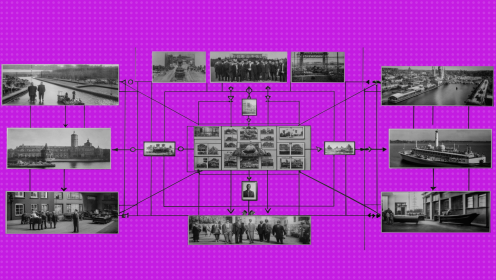Why conduct a staff evaluation
Without an evaluation, it is difficult to understand what an employee is like. As a result, you can't:
- distribute tasks - do I need to load someone harder, but on the contrary, remove some of the tasks from someone?
- distribute powers is to hang a high responsibility on those who will be able to cope with it;
- assign a fair salary that matches the employee's skills and performance;
- establish a suitable motivation system for each employee;
- determine the prospects of each team member and understand whether they are needed (or their position) in the company.
In short, you should evaluate the productivity of each employee to understand what they are capable of and how much they should get for their time. But before you start evaluating, you need to figure out what to evaluate and how.
What to evaluate
To fully evaluate an employee's productivity, you need to pay attention to two criteria:
- —What skills does he have (they are evaluated at the interview stage, but it does not hurt to periodically evaluate them during the course of work):
- —hard skills - all professional skills directly related to work. You can evaluate them using tests and exams;
- —soft skills - universal skills that are useful for everyone: critical thinking, communication, emotional intelligence and many others. It is difficult to evaluate them from the outside, but you can do it through a conversation;
- —How effectively it achieves its goals. Here everything can be quite specifically calculated. How many requests should the Manager close? How many layouts should the designer draw? How many packages should the courier deliver? Any numerical metrics can be used: from the number of closed issues to the conversion from the first contact to the closed transaction.
The difference in requirements should take into account not only different specialties, but also different levels of skills and responsibility - you expect better results from a leading specialist than from a beginner.
Keep in mind that in order to properly evaluate an employee's productivity, you need to understand their responsibilities and field of activity.
How to evaluate
To evaluate employees, there is a car and a small cart of various methods (why there are so many of them is not clear). Some will need the help of colleagues, while others can be handled independently. Here are the most notable:
- Matrix method - comparing the skills of a particular person with the expectations of the average representative of this position.
- The method of the system of arbitrary characteristics - formulation of an opinion about an employee after listing all his most outstanding achievements and failures.
- The group discussion method - discussion of the employee's qualities by the entire department (including the employee himself). Sometimes outside experts are invited for such discussions, because they are not biased.
- The "360 degree" method - all colleagues of the employee are asked to evaluate their skills and qualities.
- Point scoring method - an employee receives points for any action (or inaction), after some time, the sum of points is calculated and compared with an exemplary (or average) indicator.
- The free scoring method is similar to the previous one, with the only difference being that the points are used to evaluate the employee's professional and flexible skills. Then they are added together and compared with the ideal indicator. Based on the sum of points, you can create a rating, which leads to the following method.
- Rank method - you need to place all employees in the rating from the most successful to the least effective. This way you can determine who is worthy of promotion and who needs to be sent for professional development.
Now there are new evaluation methods, the most popular and effective of which is the KPI method - key performance indicators. It works simply: the Manager makes a plan that the employee must complete. After a certain period of time, the tasks actually completed are compared with the plan. You can evaluate the performance of tasks both quantitatively (how many applications were closed, clients arrived, projects were completed) and qualitatively (how profitable the client is, what the employee has learned). The main thing is to prescribe realistic KPIs.
7 staff evaluation rules
For an adequate evaluation, you need to follow several rules-otherwise the process will lose all meaning.
- 1.Document all actions related to the evaluation to avoid misunderstandings.
- 2.Evaluate your productivity regularly, not when you have to.
- 3.Periodically change and expand the evaluation criteria - so employees will not be able to track them and adjust.
- 4.Check only what is really important for a particular position. It sucks to tease an employee for not knowing some issues that are not necessary for their work.
- 5.Formulate uniform requirements for employees of the same specialty and level of responsibility.
- 6.Certification should not be the meaning of the work, it can not be used to control work responsibilities.
- 7.If you manage a small team, it makes sense to sometimes involve third-party experts to evaluate productivity.
What to do with the results
First, discuss with each employee their performance evaluation. If you are evaluating the overall performance indicators of the team, familiarize all employees with them, and then decide together what and how you can improve and fix them.
It's up to you to decide what to do with specific employees after receiving the evaluation results. If you are looking for a person who can be delegated more responsibilities, promoted, or increased salary and bonuses, pay attention to the people with the highest ratings. Here, however, there are pitfalls - if a person performs their current duties well, it is not a fact that they will be able to cope with something new. But you will have to work with low-performing employees: send someone to training, fire someone, or transfer someone to a more suitable position.
One way or another, it is definitely worth evaluating the productivity of the staff. This way you will know what each employee is like, which means you will be able to find the right approach to everyone and achieve cool results for the company.

















